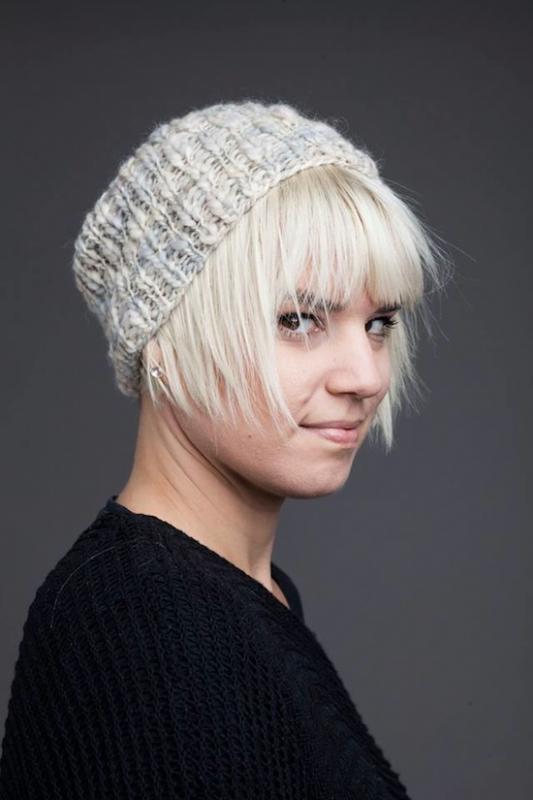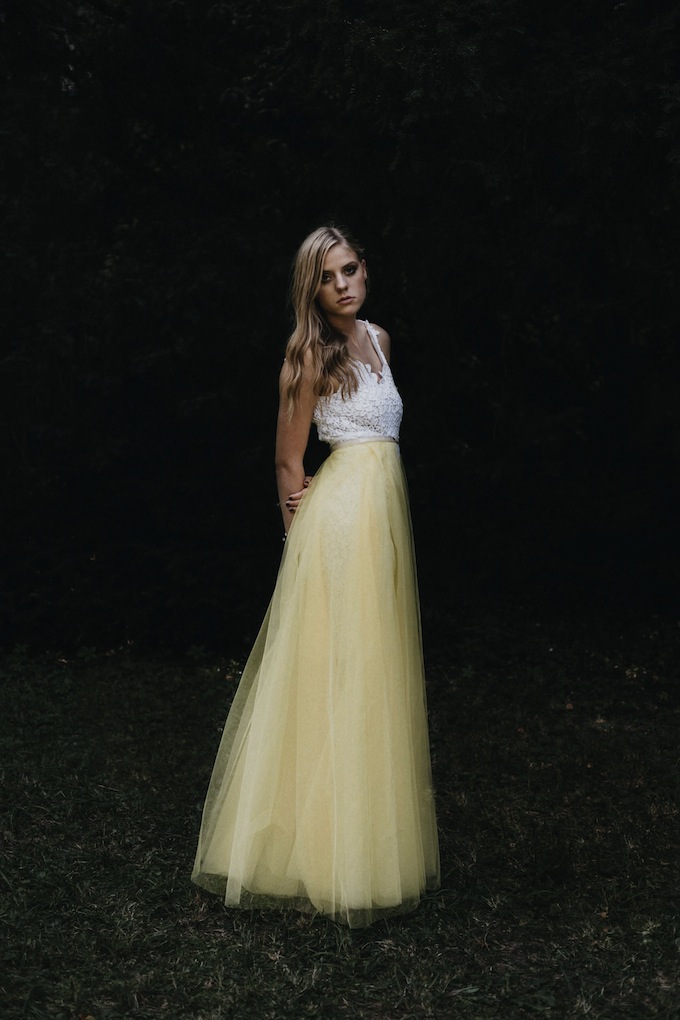A few weeks ago we went to a fitting on to Sára Bálint. Her special wedding dresses have gripped me for many years, but only now I understood why.
Sára uses old laces (table clothes and curtains) for making her dresses, which is not only a masterly form of recycling, but with this environmentally conscious tailor-made solution she can evoke the bride's lace memories, linking past, present and future in this way.
I remember a wonderful lace dress, with which you won a price at the Marie Claire competition. Did you make it with the same method?
Yes! That was the first wedding dress of this kind, or better said the first white dress of the kind. Although I definitely designed it as a wedding dress, it was not clearly voiced like this. In the same way, the competition did not emphasize the recycled nature either. This is mainly important because it won in spite of this, so it definitely came through. This was a good feedback for me as well, as not everybody is enthusiastic about the rethought function of the already used stuff.
The price winner dress - Photos: Marie Claire
How did you get the idea to use old laces? Were you led by any environmentally conscious, recycling theory?
I reckon that the original idea came when I got crochets from different places and they were piled up in the wardrobe. I have always thought that these nobel things have reason for existence in the world and they cannot become outdated, regardless that it is out of fashion to protect or decorate our Televisions with them. First I used these smaller pieces only on the upper part, but this was much less conscious as it is nowadays. I made a smaller collection 5-6 years ago using old laces, but this wasn't wedding-like by far.
Where do you get the laces these days?

Many people ask me this question.
There are a few places in the country. I constantly go to fairs and I am looking for these pieces online as well. There are such materials that can be found in bigger quantities, but they are not really needed, as in the case of many orders the brides rather choose dry goods. When I look for lace, I hunt only the special pieces.
There are many kinds of laces, regarding the material and the technique. Can anything be worked together?
First I thought that everything works with everything but I have a few ideal ways of use by now. The rustic pieces with larger patterns are better for skirts or roundabouts, while the more ornamental, finer laces are more ideal for tops. It is worth putting on the lace on another textile (eg. cotton or tulle) or decorating the ready dress with them, rather than using them on their own. Thus we can enrich even the originally dense patterned pieces with a richer shape and airy appearance as well. Besides this, I think that the rustic style characterizes my dresses, so I would like to keep the richness of patterns used since the beginnings on the whole dress if possible. But the thesaurus of use and matches is limitless.
What difficulties do you encounter while working?
The laces with different structures can be recycled in different ways. There are easily usable ones but there are pieces which are more delicate and lint more easily. There are pieces from which it is impossible to make symmetric patterns or they are not resistant enough. We build each piece one by one, almost flower by flower, until the appropriate pattern is born, taking into consideration the unique features of the material. It is a meticulous work with a lot of patience, but the final outcome makes it worth!
Do you know anyone in Hungary or abroad who uses the same methods?
There are many people working with old textiles, or textiles that had another function earlier,but I haven't seen this kind of lace recycling anywhere. There are a few foreign DIY sites, where you can see similar initiatives, but I do not know that anyone would use the same technique to make wedding dresses. Although it is quite an obvious way of use of the old laces, so I would not be surprised if someone else started using them similarly.
Do the brides who approach you know about your recycling technique? Are there women who are attracted exactly by this enviromentally consciousness?
It is not obvious for everyone. This topic comes up quite often at the first meeting and we have to clarify whether we follow it or not. More and more women definitely come to me as they have some kind of lace memory from their family that they would like to preserve as part of their wedding dress. Moreover it is not a problem if somebody does not really agree with the recycling. There are other possibilities, we can find perfect textiles at the draper's and there aren't pieces of laces in the wardrobe in each house. Most of the ladies come to me as they would like tailor-made dresses, based on peculiar ideas, in the style that my dresses represent.

The lace is mainly white. What other shades can you offer? Can it be dyed?
Old laces are white or off white, but in no way high colours. They need to be whitened and washed quite often. If their quality is good and they are made of organic material, then they can be dyed at home. In many cases we make the lace look a bit older and tarnished. They can be dyed with different teas, onion skin, getting a suberb colour, but noone really asks for this method. I guess the off white shades are the most prefered ones.
Are there any special cleaning ways and conservation for such a dress?
Surprisingly, the special cleaning method is not really needed in most cases. Most of the dresses can be washed even in the washing machine. We have to consider the concistency of the material, the finer pieces must not be centrifuged or washed with the machine, only soaked. Unless there is a spot on them, they do not need any dry-cleaning. Just like other wedding dresses, they are not made for everyday use, so they are more damageable than a T shirt or a casual summer dress.
To what extent is such a piece of lace durable?
If they are used properly, according to their function, then even the grandchildren can enjoy the beauty of a dress.
 Coming to you the tailor-made style does not only mean choosing the textile together and getting the right size for you, but also bringing in my own old tablecloth, crocheted by my mother.
Coming to you the tailor-made style does not only mean choosing the textile together and getting the right size for you, but also bringing in my own old tablecloth, crocheted by my mother.
Yes, definitely! I love these orders. Using the own lace memory the wedding dress becomes really personal. It makes it more valuable and unrepeatable. As preserving or giving the old laces as a gift does not really have a tradition in our country, only relatively a few possess similar textiles perfect for a starting point. But of course, there are heart-warming exceptions.
Do you make only wedding dresses or other evening dresses as well?
Besides the wedding dresses we make dresses for bridemaids and for the bride' s mother, and in the current collection there are a few pieces that can be a perfect choice for a celebration. In addition, one can find knitted accessories and pieces of clothings as well.







